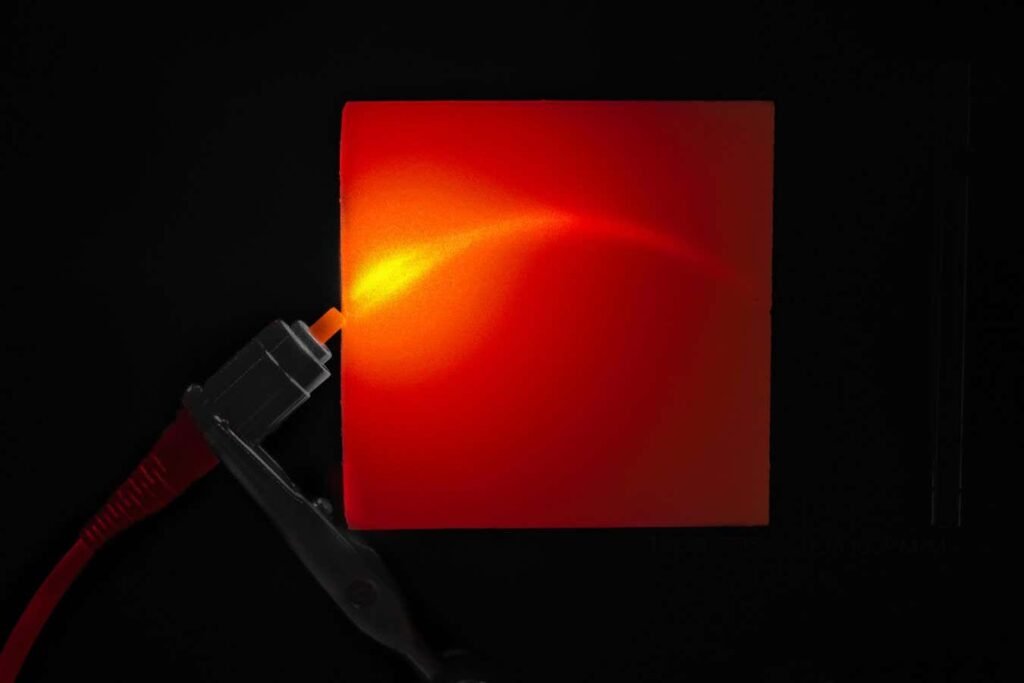
A new material can bend light
University of Glasgow
Scientists have discovered a technique that can bend light around corners, inspired by the way clouds scatter sunlight. This type of light bending could lead to advances in medical imaging, electronics cooling, and even nuclear reactor design.
Daniel Faccio At the University of Glasgow (UK) and his colleagues say they are surprised that this type of light scattering has not been noticed before. It works on the same basis the cloudssnow and other white light-absorbing materials: once photons hit the surface of such a material, they scatter in all directions, barely penetrating, and are reflected back the way they came. For example, when sunlight hits a high cumulonimbus cloud, it bounces off the top, making this part of the cloud appear bright white. But so little light reaches the bottom of the cloud that that part appears to be gray, even though it is made up of identical water droplets.
“The light bounces off and somehow tries to get in, and it bounces off all the molecules and defects,” Faccio says. “And what ends up happening is that it’s reflected back because it can’t go in. That’s this scattering.”
To repeat this process, the group 3D printed objects of white opaque material leaving thin tunnels of clear resin inside. When light is shone on the material, it travels into these tunnels and is scattered, just as light is in snow or clouds. However, instead of scattering randomly until they scatter uniformly in all directions, the photons are directed back into the resin tunnel through the opaque material. The team used this to create a series of objects that guide light in an organized manner.

3D printed white blocks with curved channels guide light scattering
University of Glasgow
These 3D printed objects are functionally similar fiber optic cableswhich focus light along their length, but operate on fundamentally different principles. Fiber optic cables direct light by continuously reflecting it internally. When photons try to leave the inner core of a plastic or glass cable, they hit another material with a lower refractive index and are reflected back inside. In this way, the light can be carried for kilometers at the same time, even around bends.
According to the researchers, their material increases the transmission of light by more than two orders of magnitude compared to solid blocks without the same clear tunnel, and also allows it to be steered around curves. This is much more efficient than fiber optics, so it will struggle to cover the long distances it covers, but it’s also very simple and cheap.
This light-bending method can use tunnels in existing translucent materials, such as tendons and fluids in the spinal column, to provide new ways of medical imaging. Faccio says the same principle also works to direct heat and neutrons, so it can also be used in a wide range of engineering applications, such as refrigeration systems and nuclear reactors.
“It was not obvious that this would work at all. We were surprised,” says Faccio, who believes that the phenomenon could have been easily discovered decades or even centuries ago. “It’s not like we’ve created or discovered some weird, niche equation with some weird properties.”
Topics:

